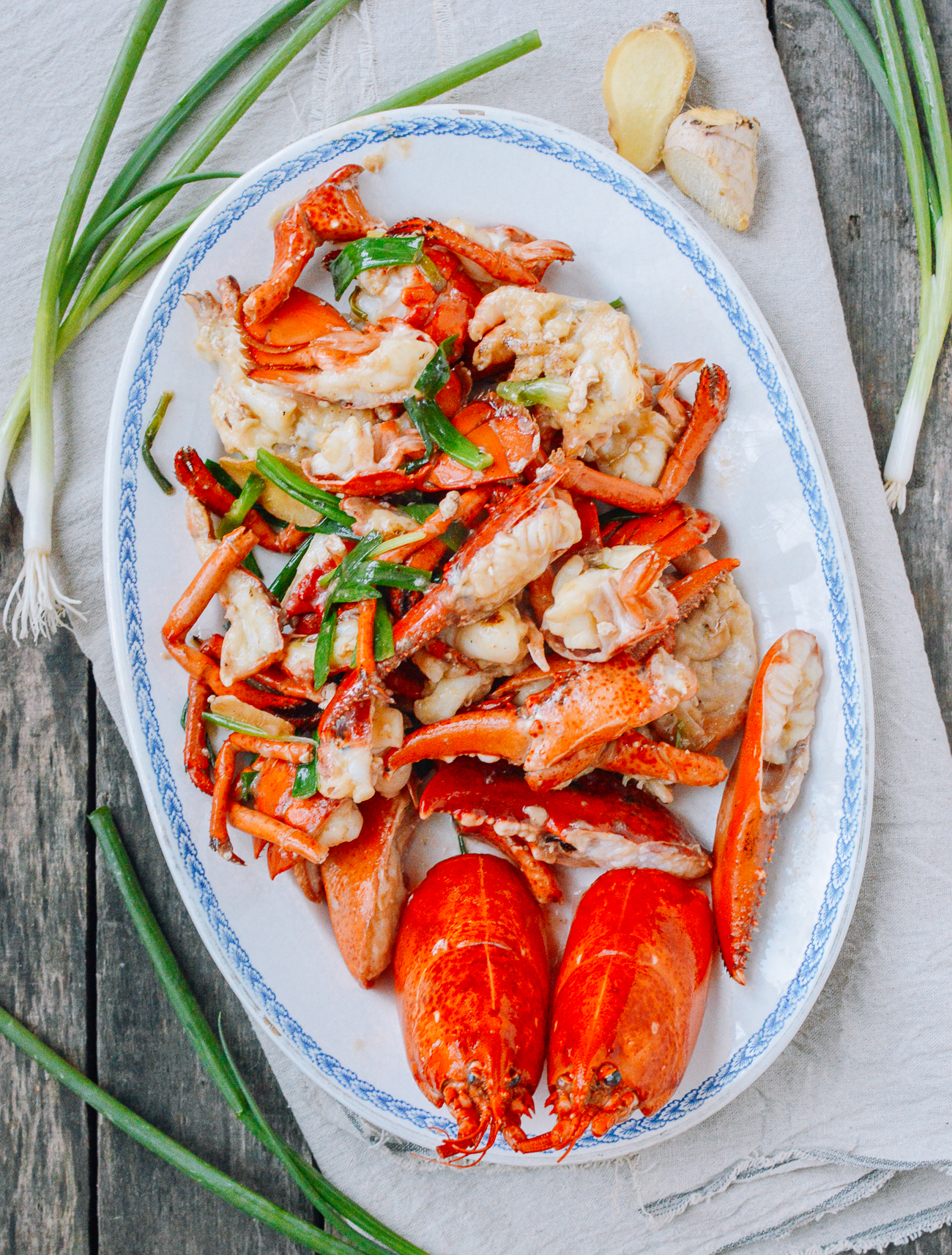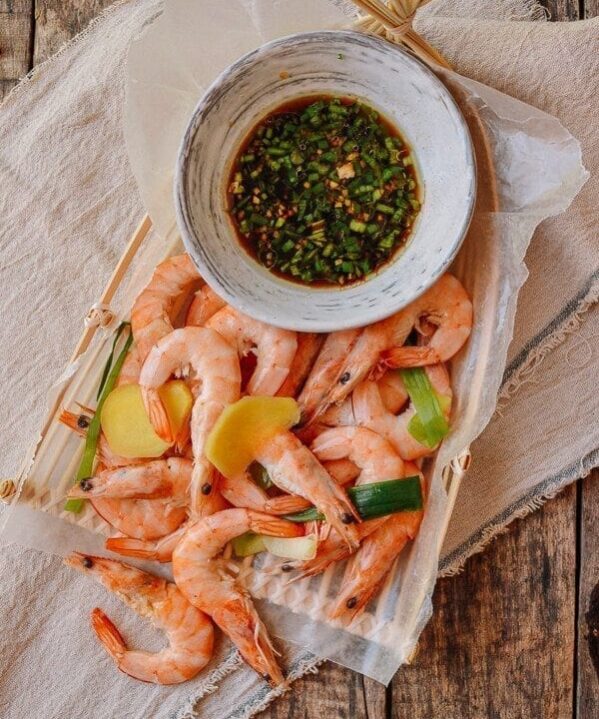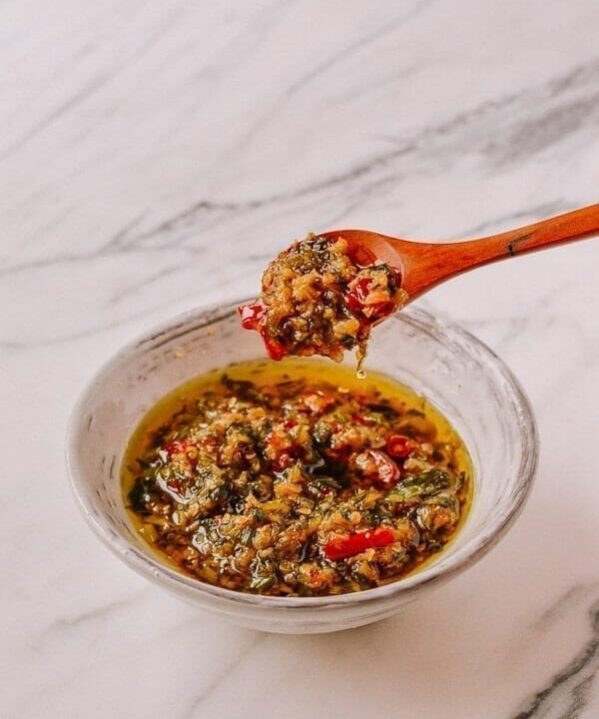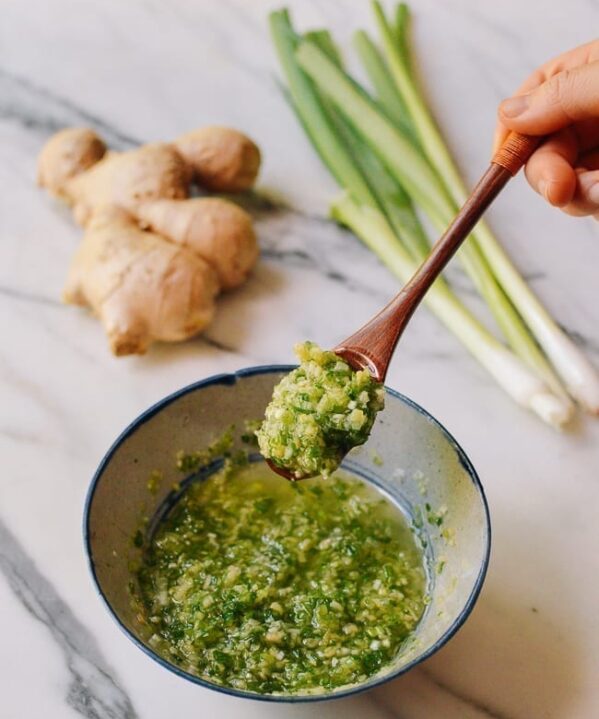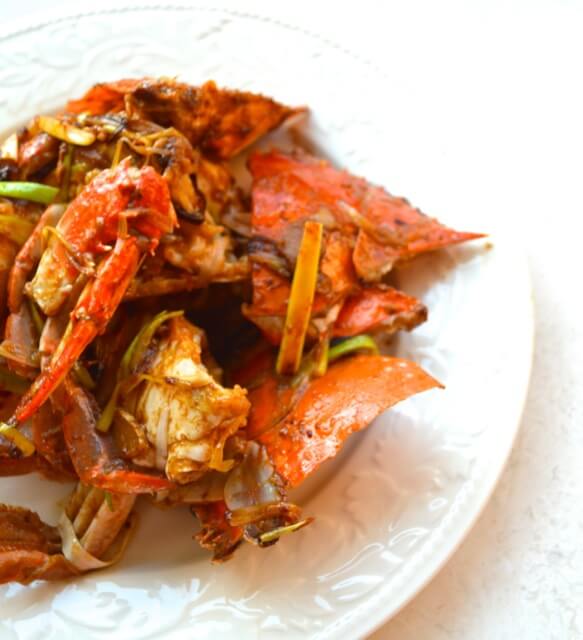If you’ve ever had the privilege of attending a 10-course Chinese Wedding Banquet meal, you know what Cantonese ginger scallion lobster looks and tastes like. It is one of my favorite courses at a Chinese banquet, and one of the best ways to enjoy fresh lobster.
Ginger scallion lobster is usually served as the sixth dish in a 10-course meal, so make sure you pace yourself at your next banquet!
Though we know from experience that even after a platter of cold meats and jellyfish, mayonnaise shrimp with candied walnuts, roasted chicken, steamed fish, and abalone with bok choy that when the lobster rolls around, you MAKE room. Next time you get invited to a Chinese wedding, don’t hesitate to accept the invitation.
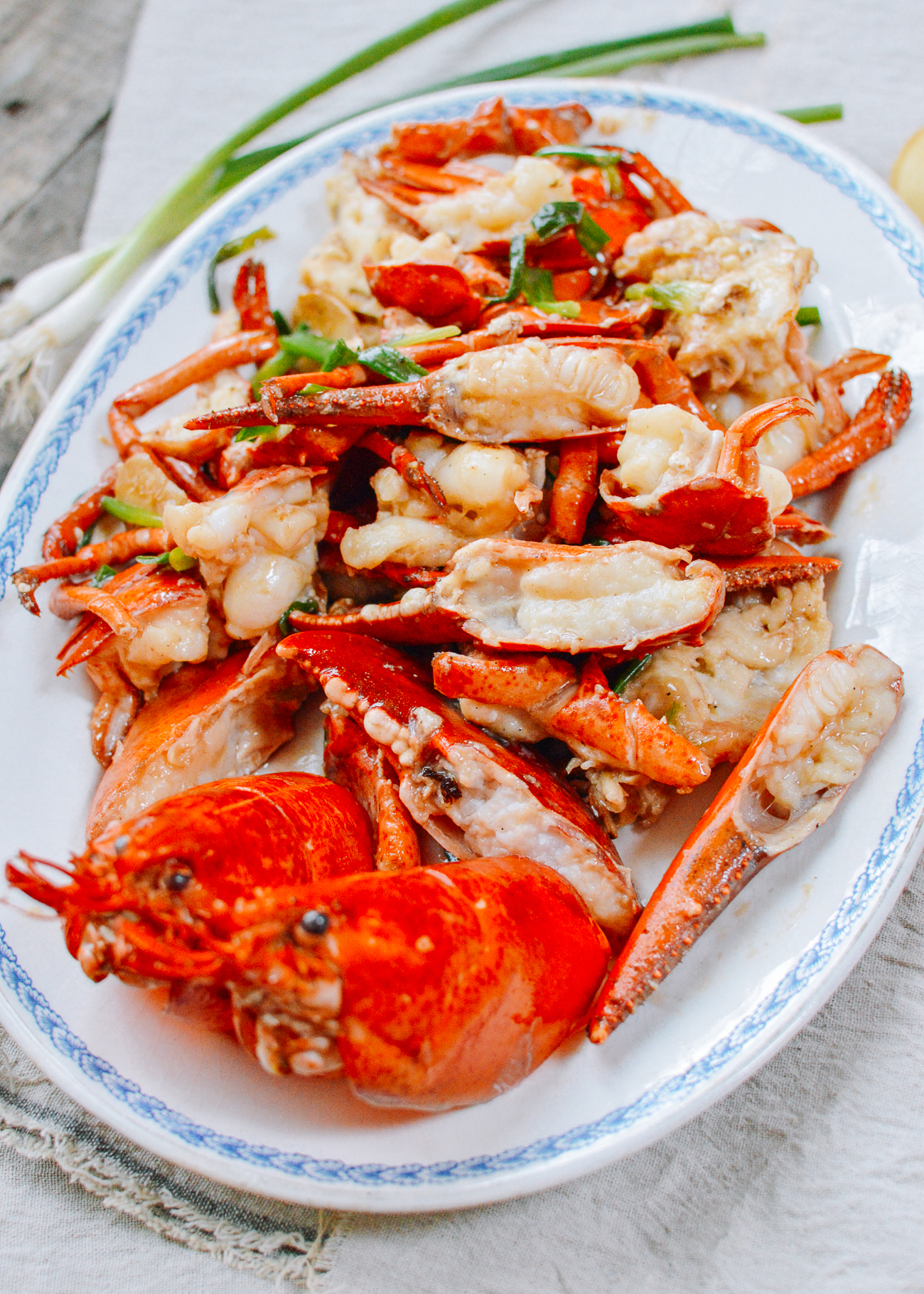
The lobsters used in this Cantonese ginger scallion lobster dish are often cold water lobsters from Maine or Boston. It seems to me that most Americans think of Maine when they think lobster, but many Chinese in Beijing know Boston as the place where the best cold water lobsters come from. Ultimately, the entire New England region has a lock on these tasty crustaceans.
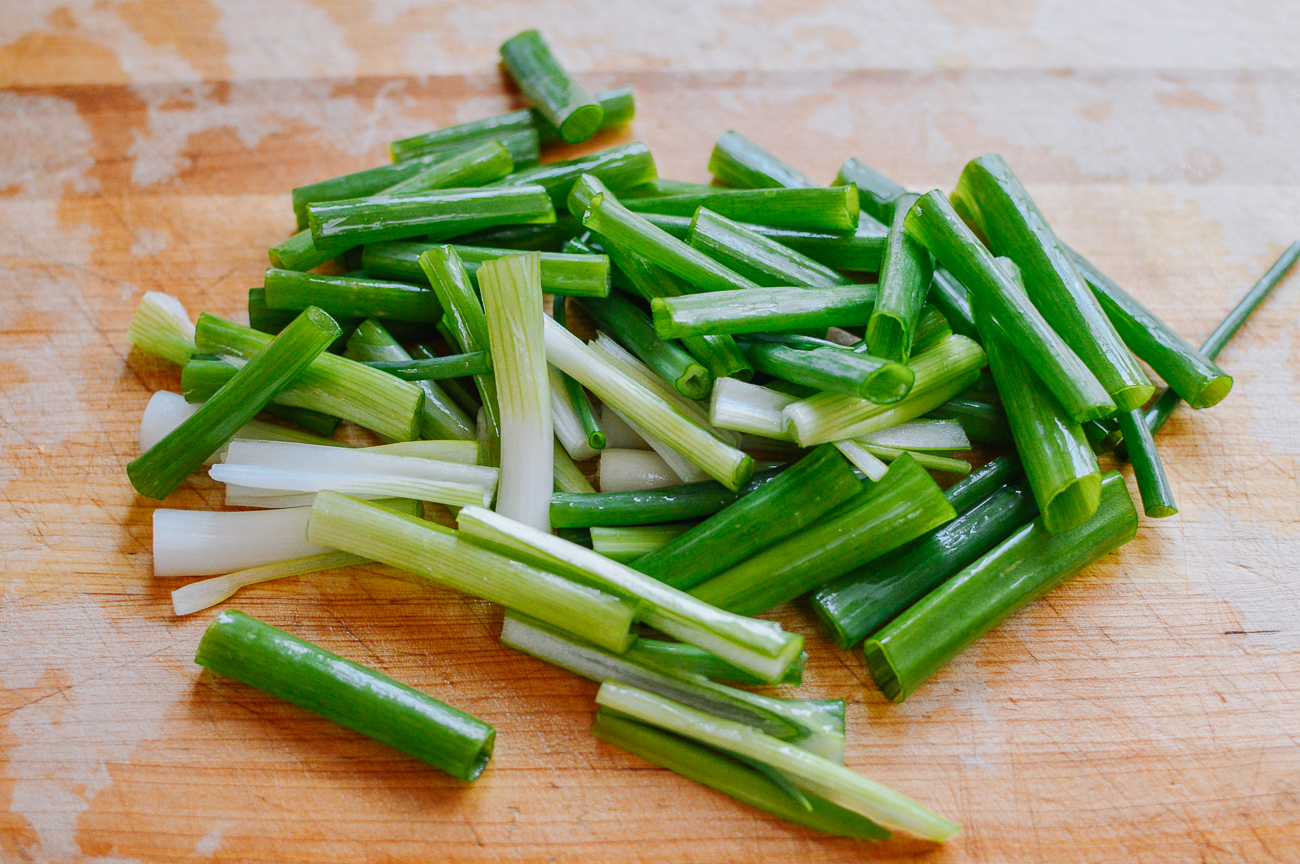
December is generally the last month of the lobster season, but it’s also one of the best times of year for it. They’re usually widely available at local supermarkets and sometimes even on sale.
Processing live lobsters isn’t for everyone; it can be a bit of a daunting task if you’ve never done it before. If you’re willing to give it a go, however, we’ve provided some step-by-step instructions. If you’re still not comfortable with it, you can make this recipe with just frozen lobster tails or have the fish monger process the lobster so you can the the claws and the lobster tail.
Be sure to check out our other tasty scallion ginger crustacean recipes like Ginger Scallion Shrimp and Scallion Ginger Cantonese Crab!
Cantonese Ginger Scallion Lobster: Recipe Instructions
The steps to preparing a live lobster are as follows:
- Put the lobsters in the freezer for 10 minutes. This puts slows their metabolism, de-sensitizes them, and makes them easier to handle.
- Remove the head shell to dispatch the lobster. You can discard these, or trim them so that they can sit upright on the plate (if you want to keep them for presentation, which is what’s done in most restaurants).
- Cut off the mouth portion of the lobster head with a cleaver or chef’s knife.
- Cut or twist off the lobster claws, and cut off the smaller legs. Set those aside.
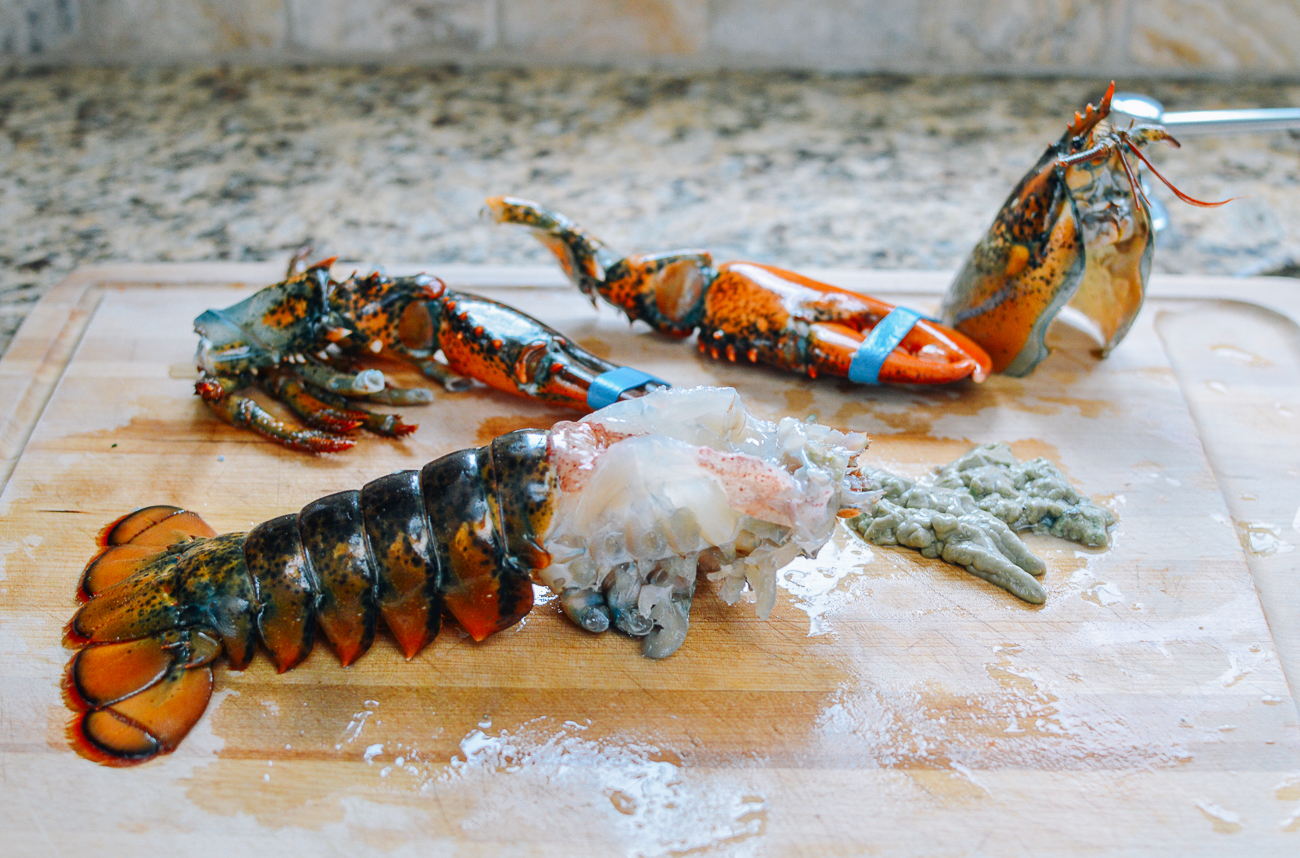
5. Remove and discard the lobster gills, which are inedible. Remove the green mustard, innards and the sand tract. Rinse all the lobster pieces under cold running water. You can discard the mustard/tamale, use it in another dish, or include it in this dish. We left it out (some people don’t like the strong flavor).
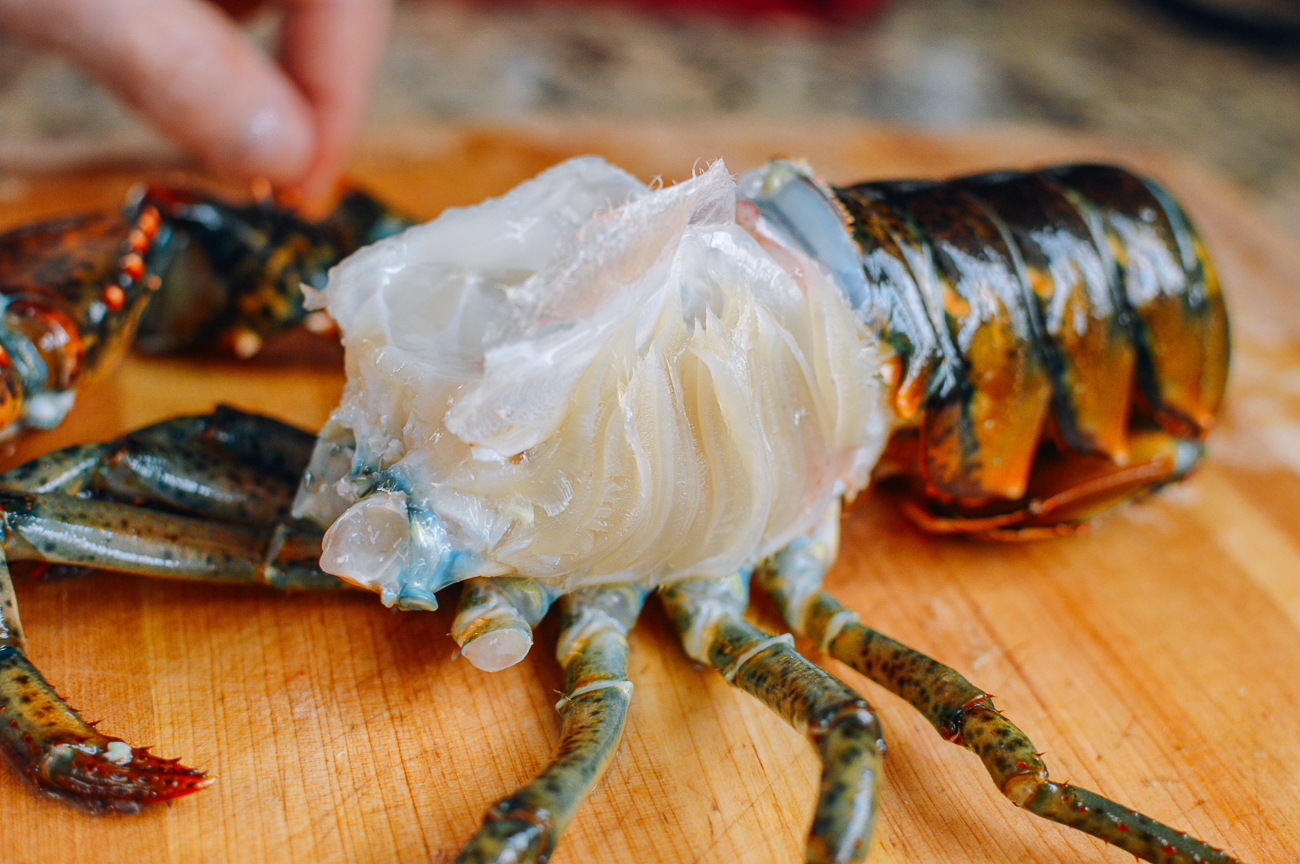
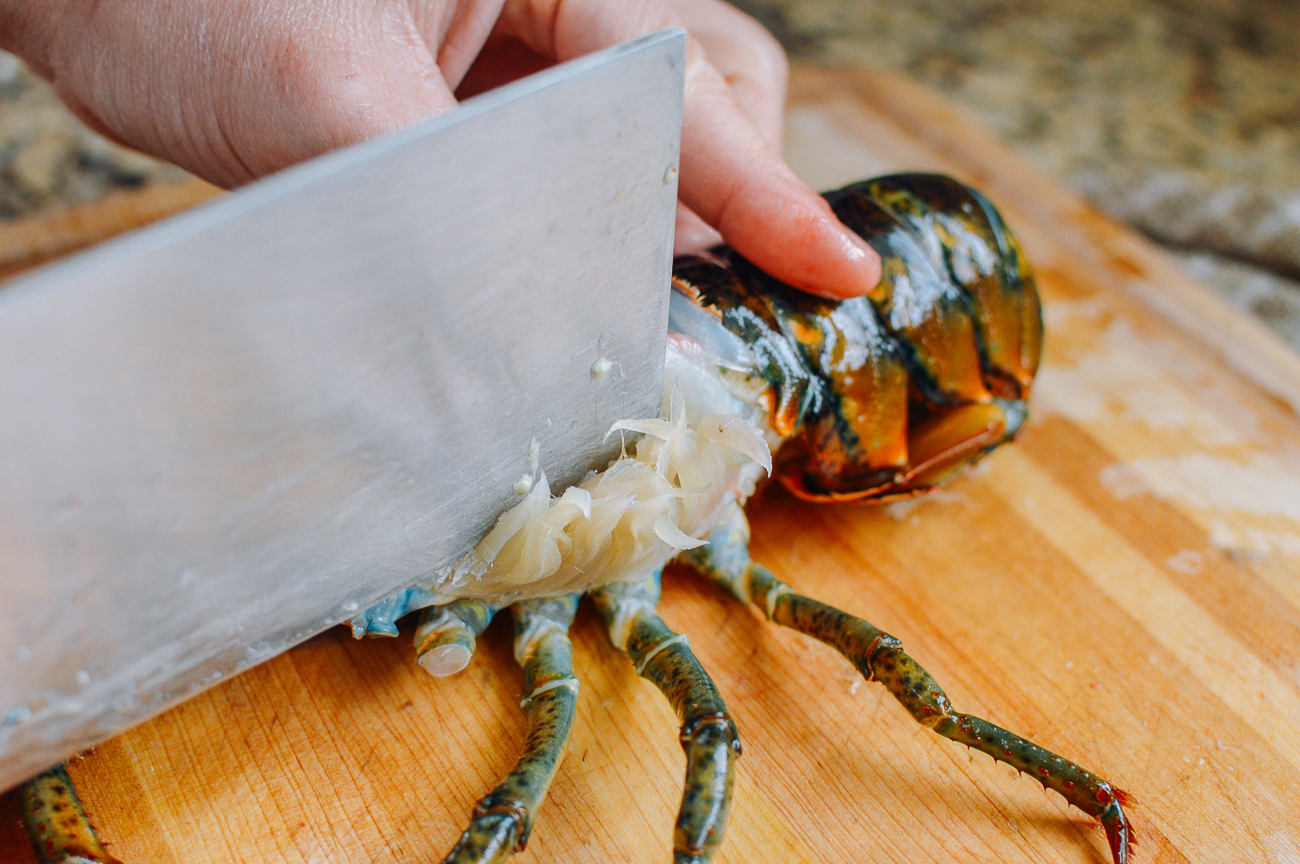
6. Split the lobster lengthwise from the head portion to the end of the tail, so you have two halves. Take each half and cut off the upper section, separating it from the tail portion (there’s actually quite a bit of meat in that piece). Cut each tail half into 3 equal pieces, giving you 6 total tail meat pieces. You can adjust this according to the size of the lobster.

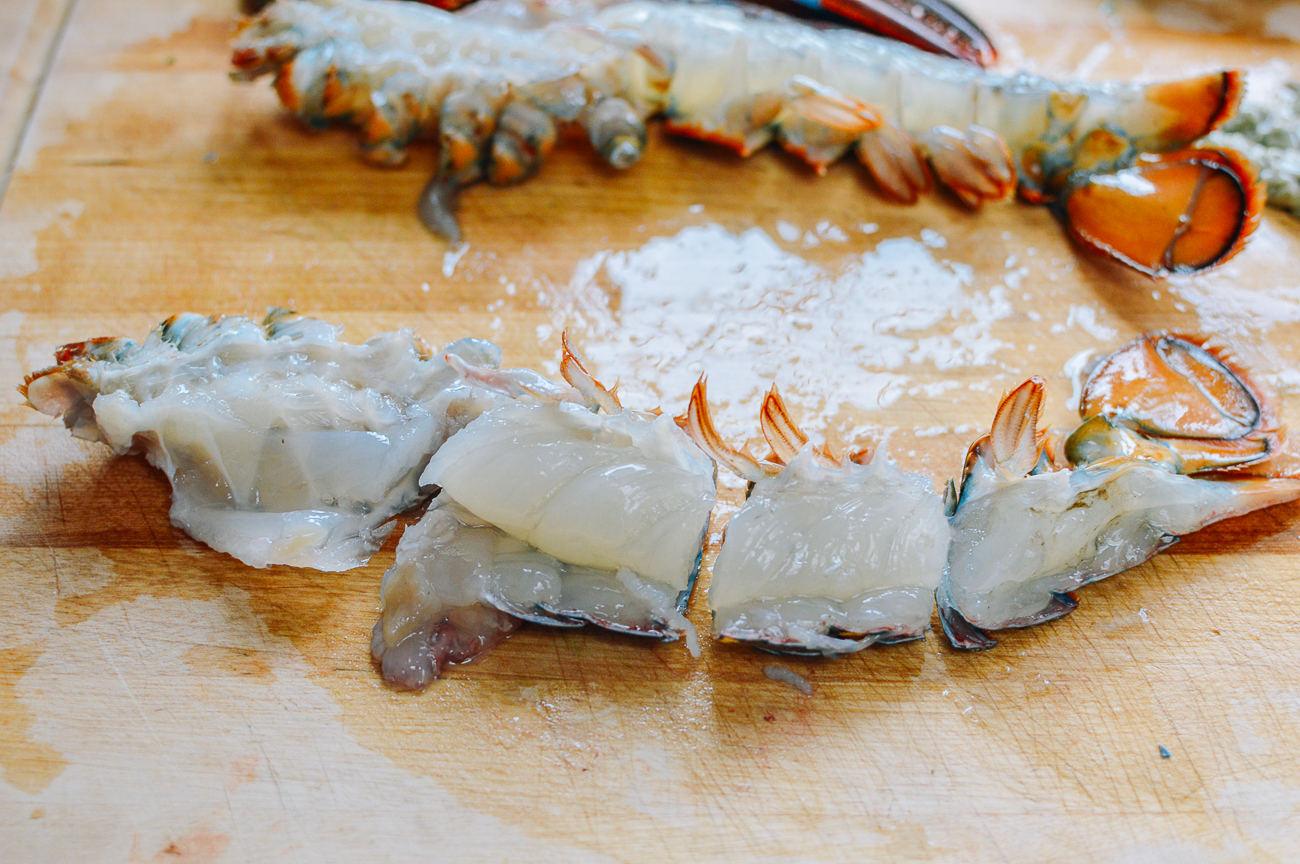
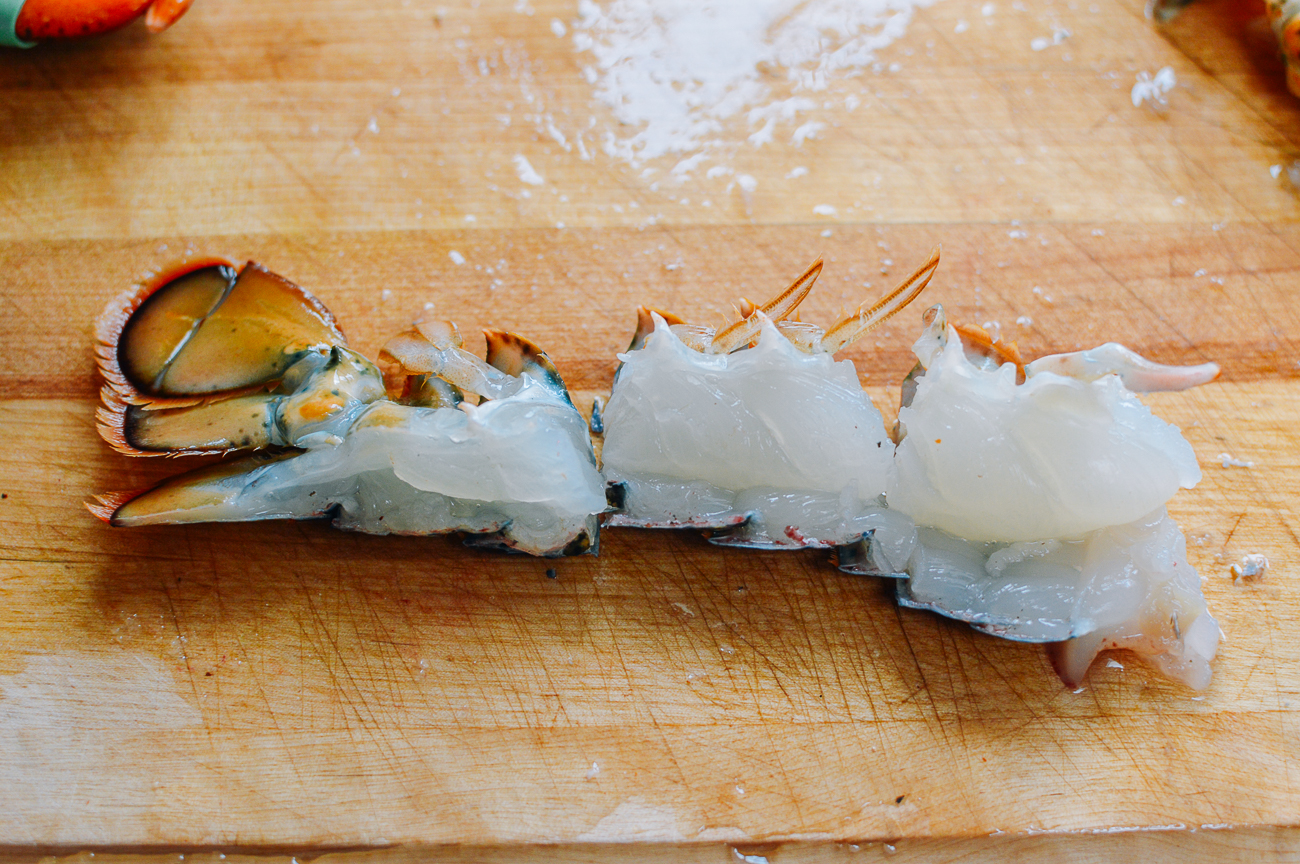
7. Separate the elbow joint from the claws and split each claw with a cleaver (using a mallet may help). Make sure that you split the claw with the light color side up as this light color side tends to be more porous and less slippery than the dark side.
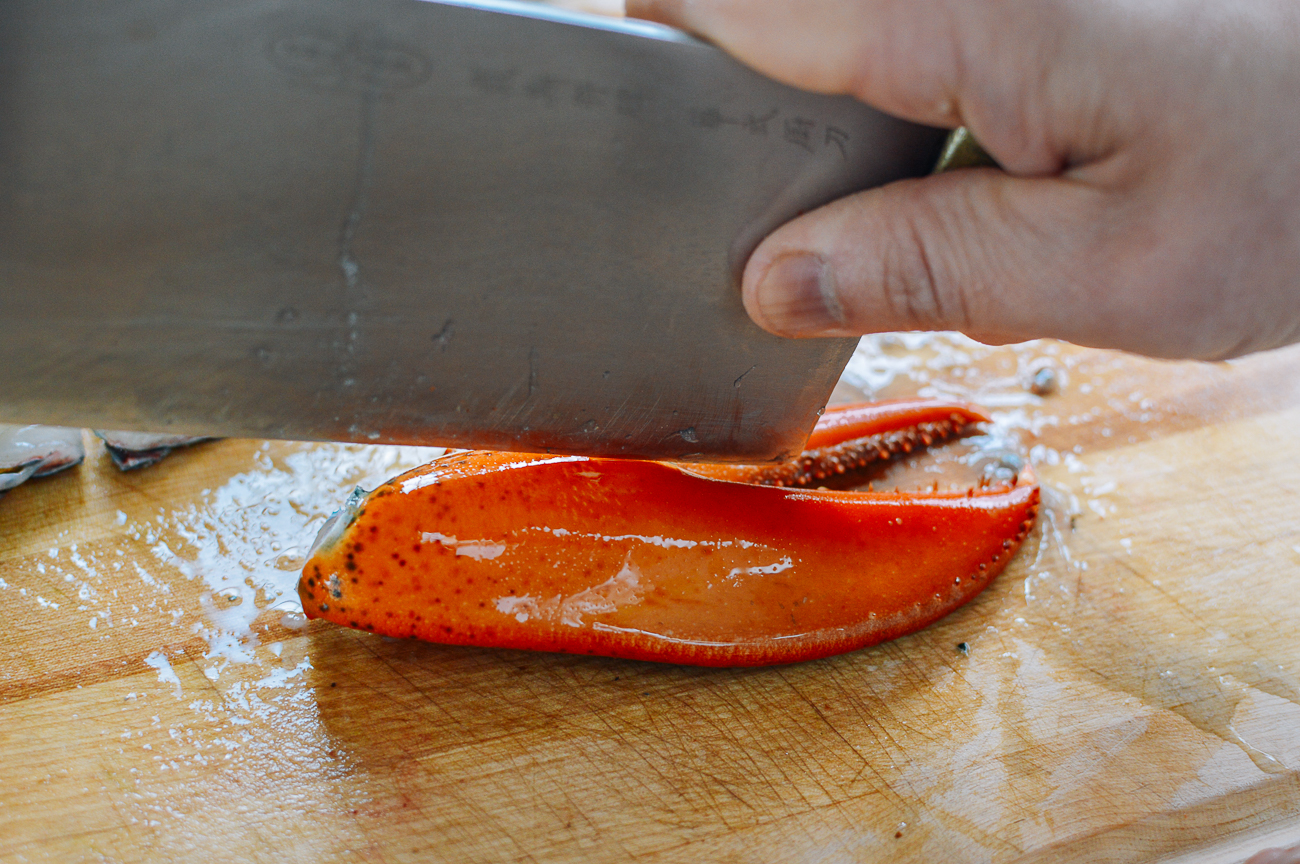
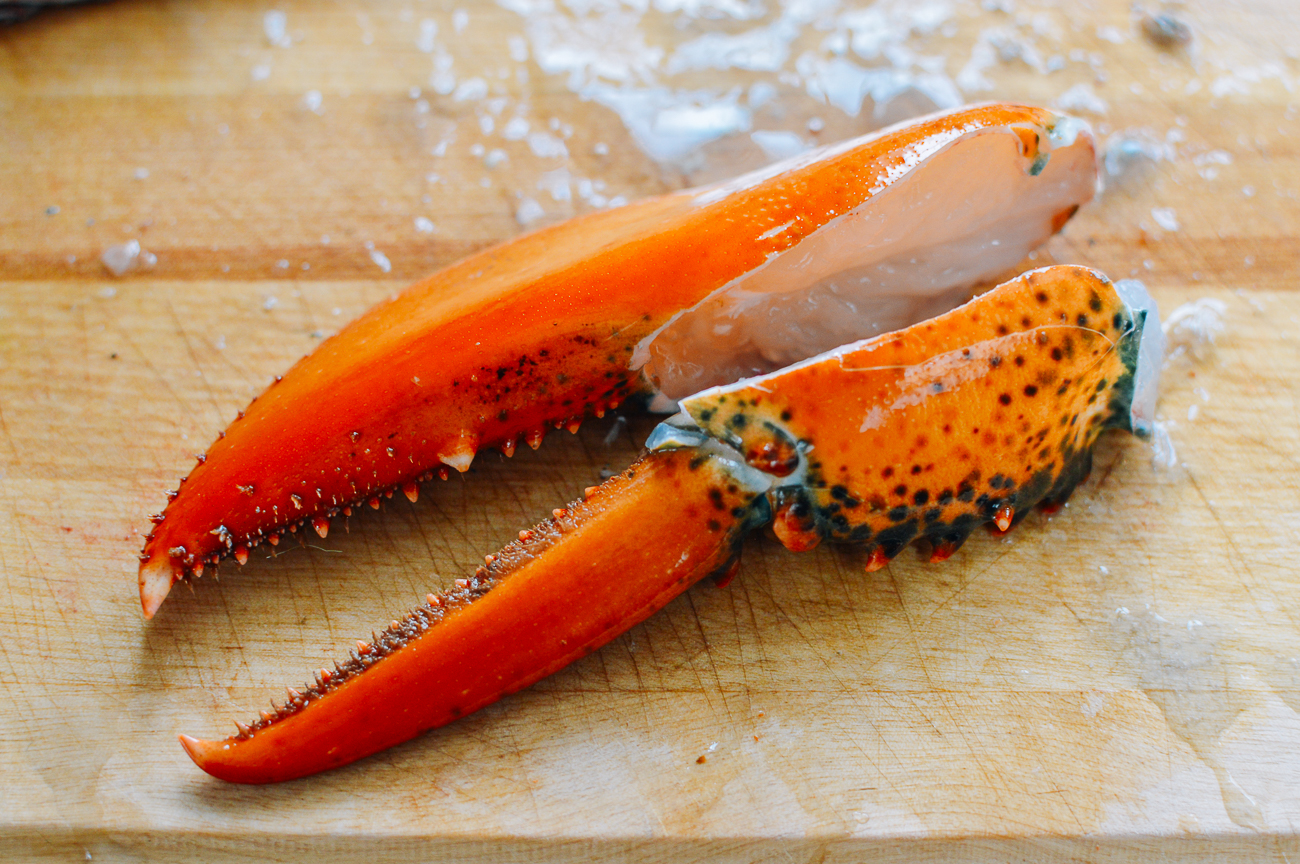
Cooking the Lobster
Let all of the lobster pieces drain of excess water after you rinse them and pat dry with a paper towel.
Mix the flour and cornstarch in a shallow bowl, and lightly dredge the lobster pieces. Dredge only the exposed meat to seal in the juices.
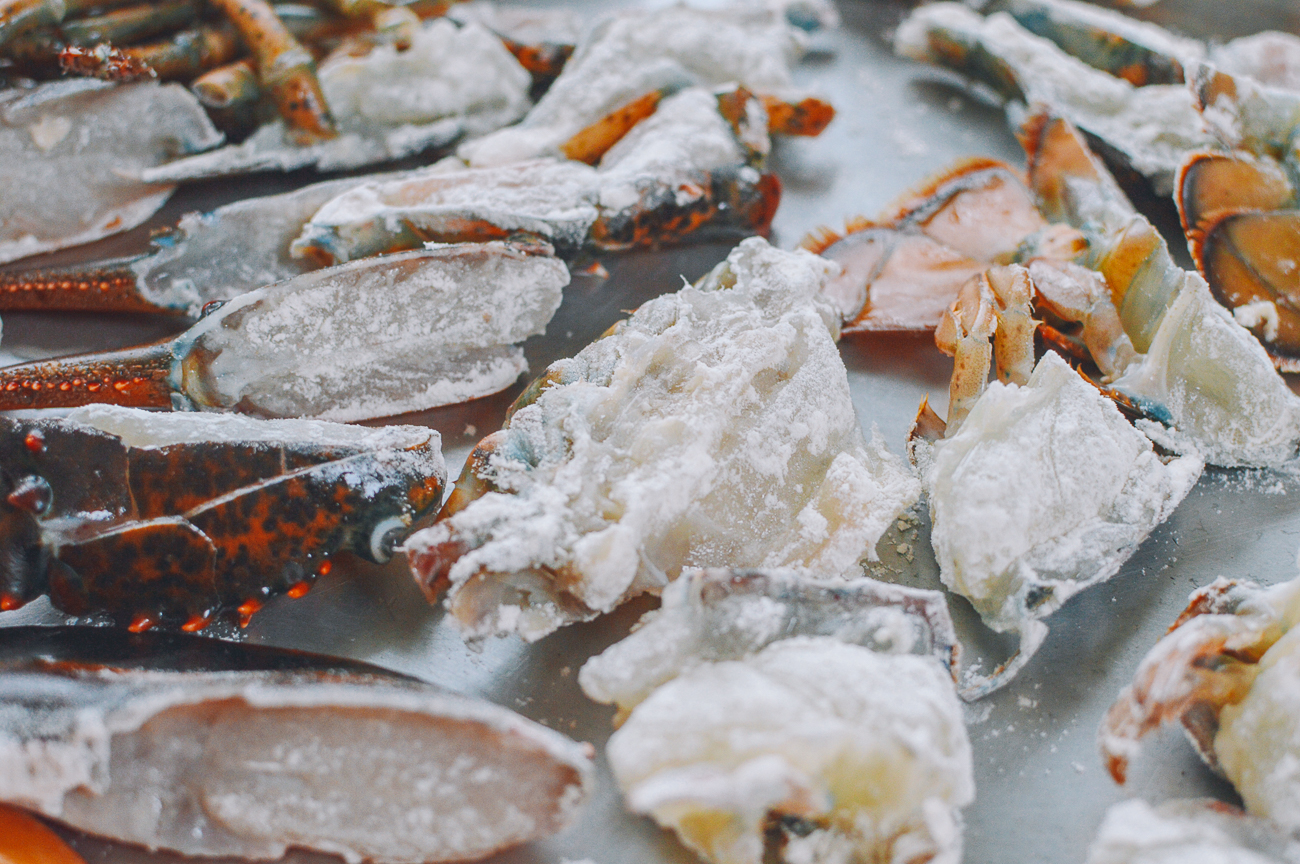
At this point, many restaurants deep fry the lobster in a large wok to quickly seal in the juices. This process only takes 20 seconds or so, but for home cooking, we’ll use a smaller pot and fry in batches. This flash fry method cooks the lobster about 70% of the way through, enhances the lobster flavor, produces a rich color, and seals in the juices while preventing the tender meat from overcooking.
Heat 2 cups of oil in a small pot to about 350 to 400 degrees F, and drop the lobster into the pot a couple pieces at a time for about 10 seconds. Remove to a sheet pan to drain. The shells should turn bright red almost instantly.
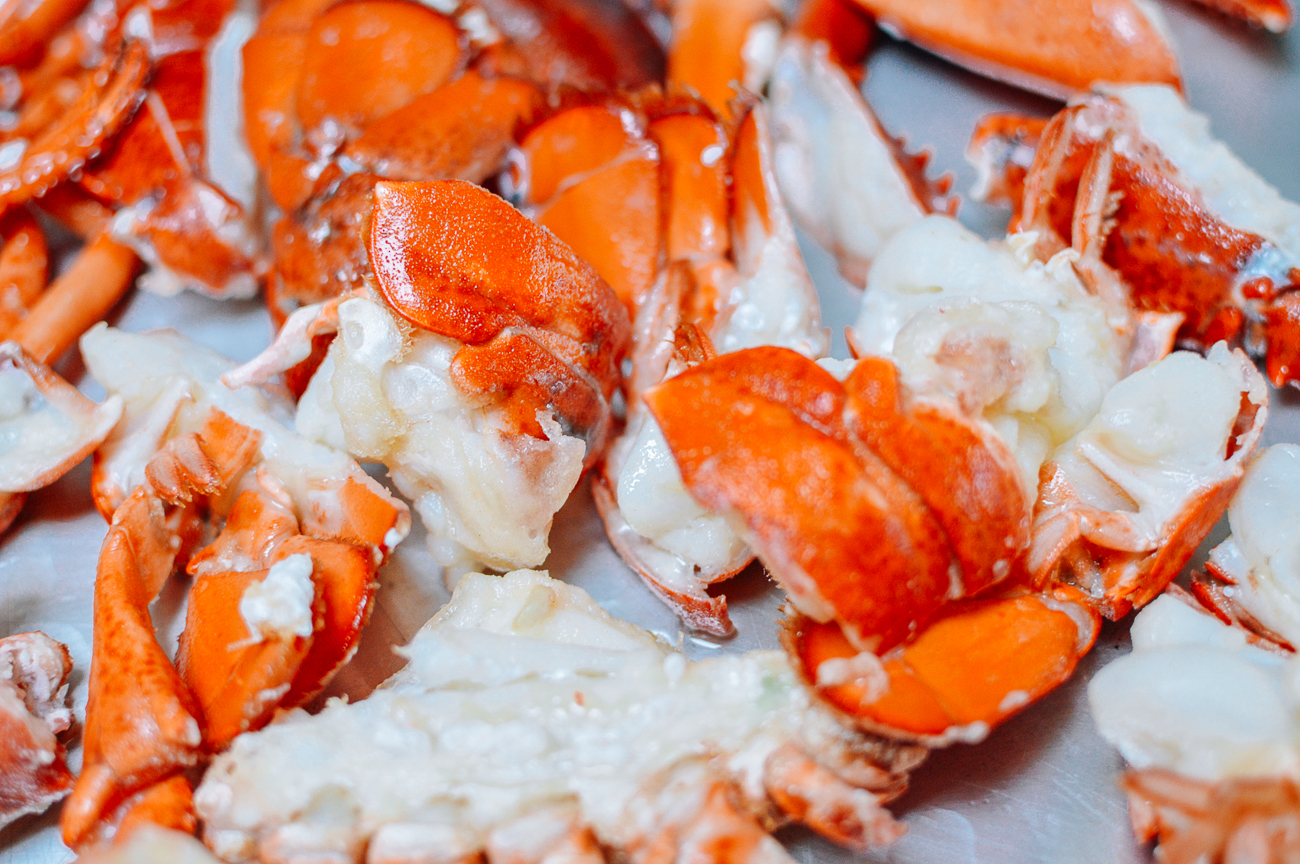
To finish the dish, start with a clean wok over high heat. Add 2 tablespoons oil to the wok, along with the ginger. Let the ginger fry for about 30 seconds, until fragrant.
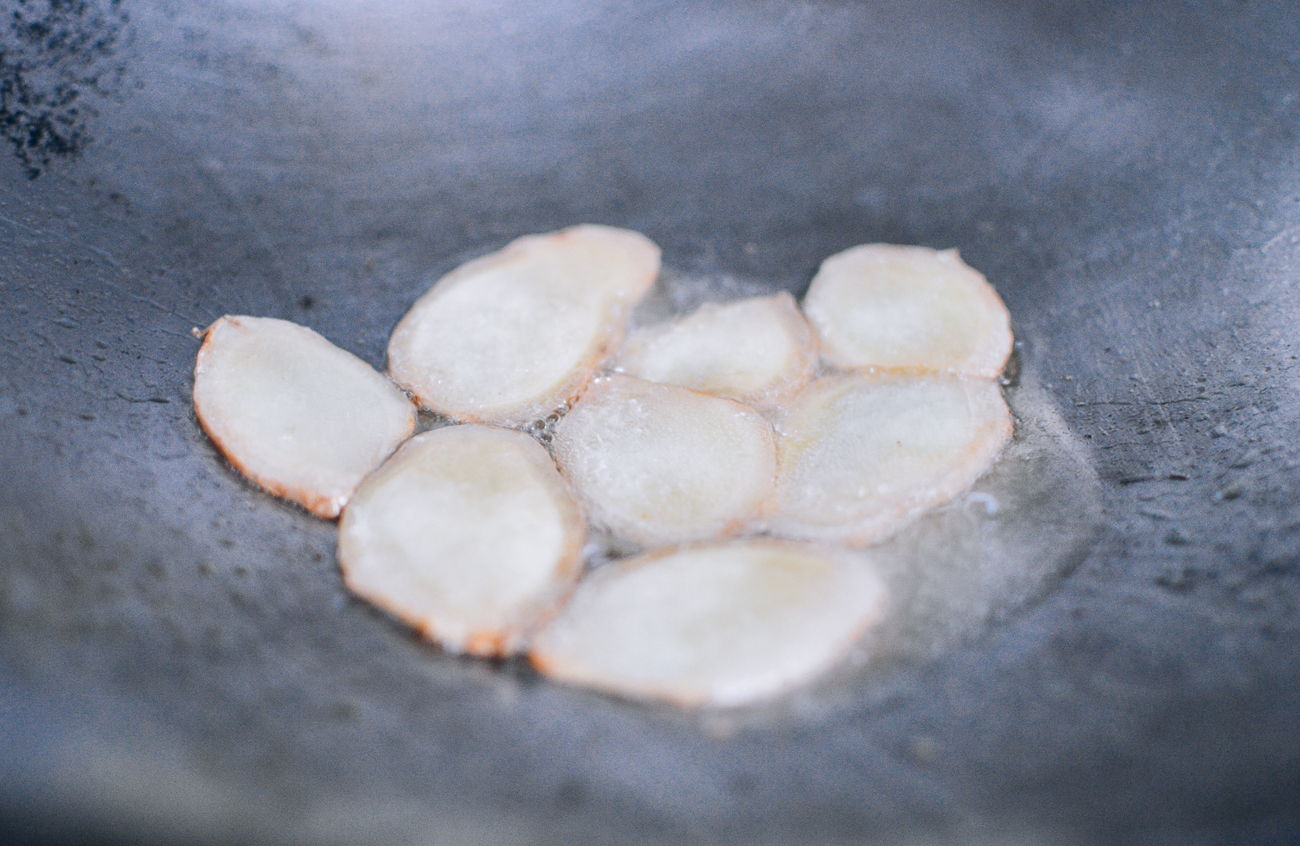
Add the white portions of the scallions and the lobster. Stir fry on for 20 seconds, keeping the heat cranked up as high as it’ll go.
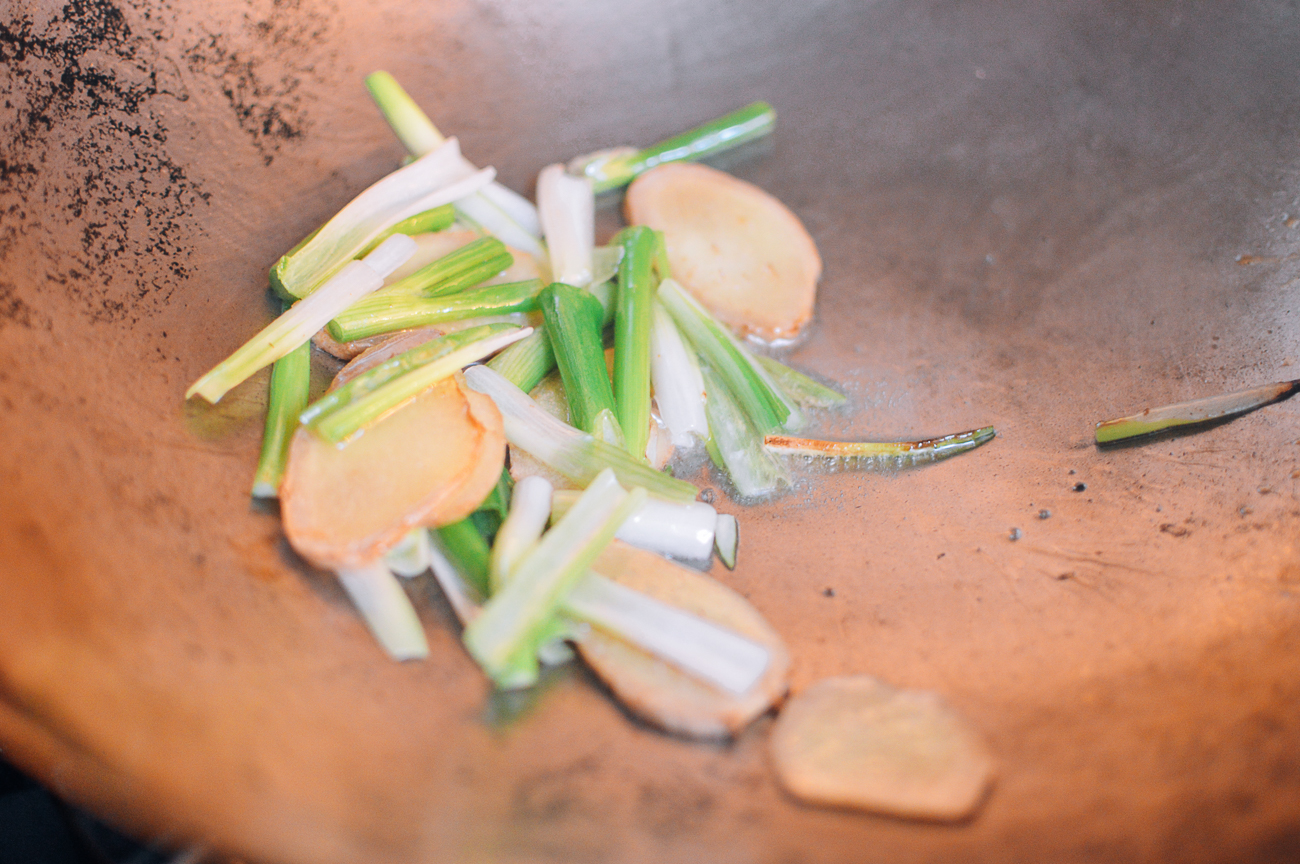
Pour the shaoxing wine around the perimeter of the wok and immediately cover it. Let it cook for about 2 minutes. This step infuses or “bakes” the lobster with the ginger and scallion flavor.
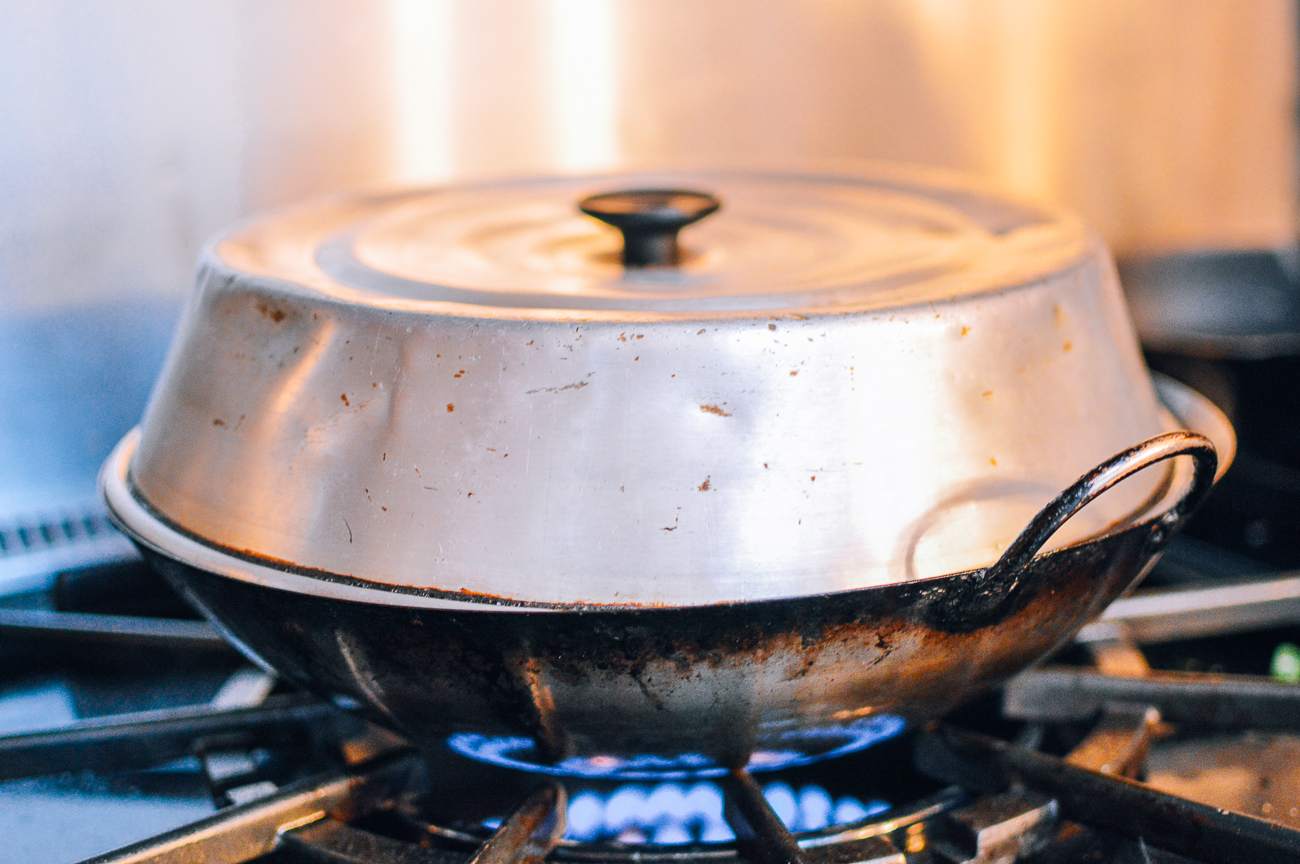
Uncover the wok and add the soy sauce, sesame oil, sugar, white pepper, and the rest of the scallions. Stir fry for another minute. You can add a couple tablespoons of water if the wok is too dry.
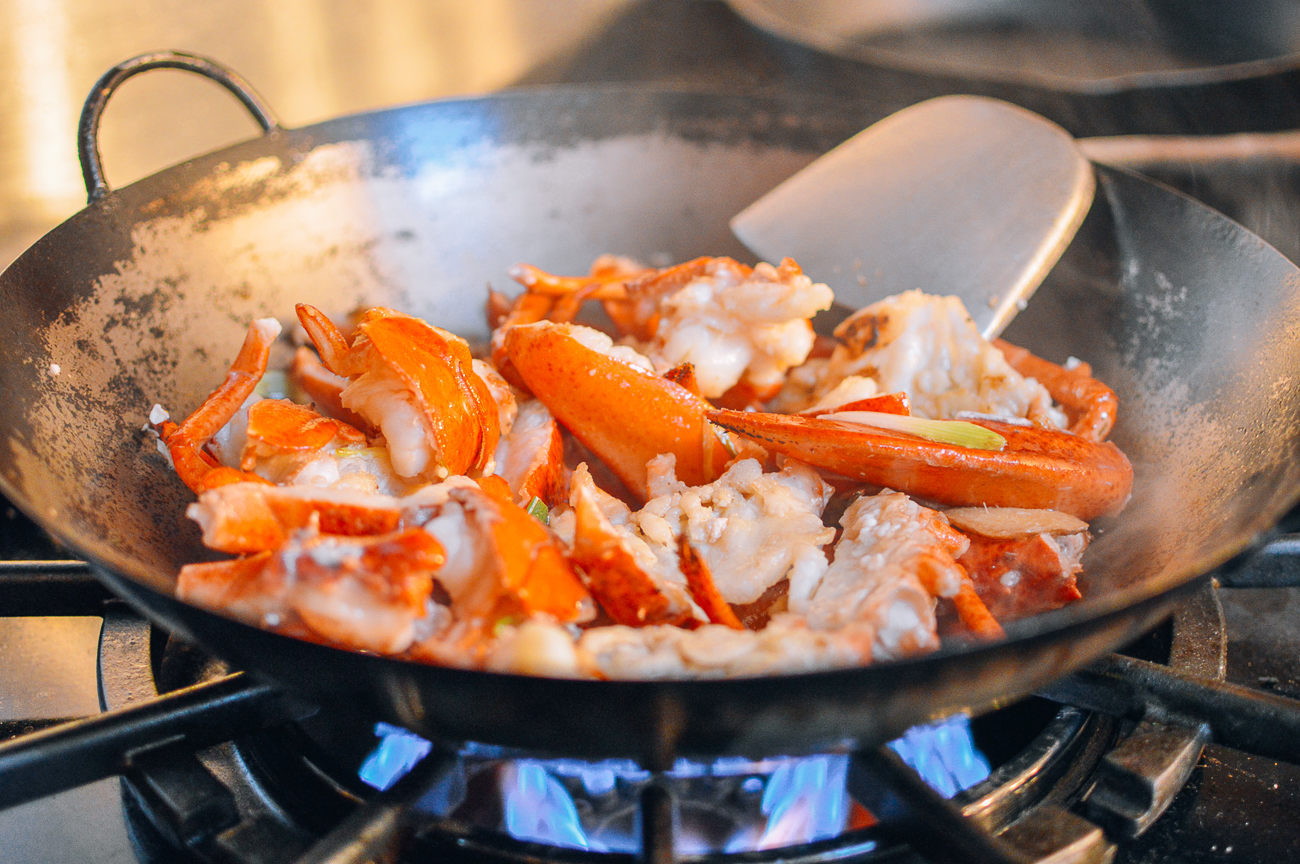
Serve!
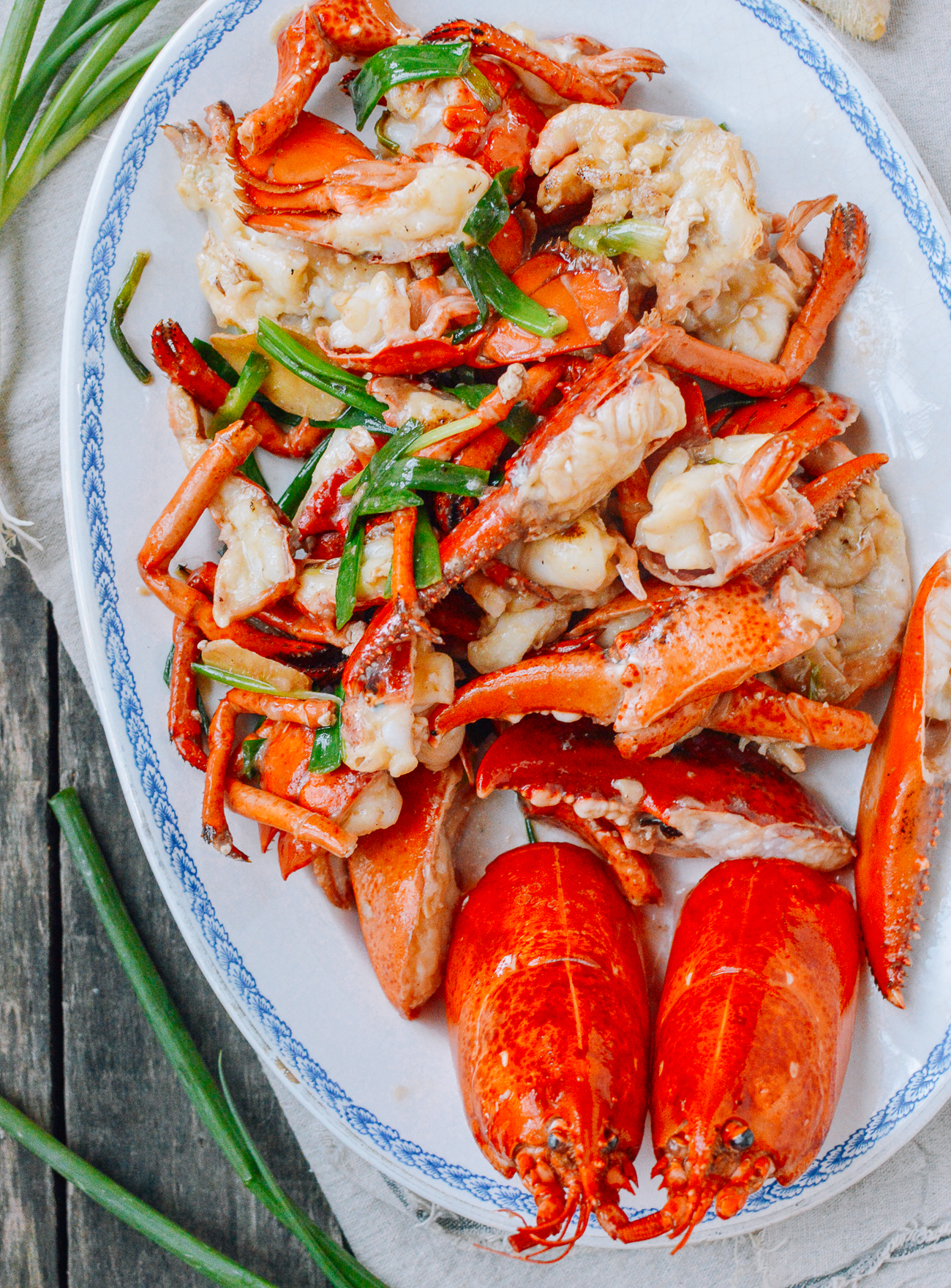
That’s Ginger Scallion Lobster!
We know this is a bit of a challenging recipe. Don’t hesitate to let us know in the comments if you have any questions!
Cantonese-Style Ginger Scallion Lobster
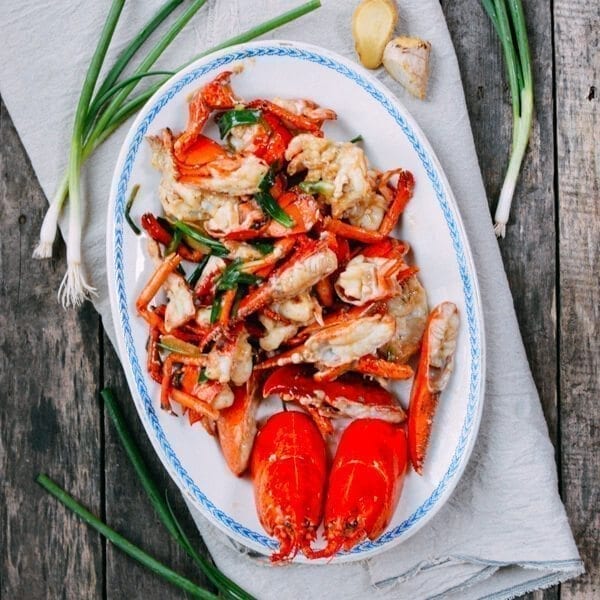
Ingredients
- 2 live lobsters (1 ¼ to 1 ½ pounds each)
- 2 tablespoons all purpose flour
- 1 tablespoon cornstarch
- 2 cups oil (for flash deep frying; plus 2 tablespoons)
- 6 slices ginger
- 3 scallions (cut into 2-inch pieces)
- 2 tablespoons shaoxing wine
- 1 tablespoon soy sauce
- 1/4 teaspoon sesame oil
- 1/8 teaspoon sugar
- 1/8 teaspoon ground white pepper
Instructions
- Put the lobsters in the freezer for 10 minutes. This puts slows their metabolism, de-sensitizes them, and makes them easier to handle.
- Remove the head shell to dispatch the lobster. You can discard these, or trim them so that they can sit upright on the plate (if you want to keep them for presentation, which is what’s done in most restaurants).
- Cut off the mouth portion of the lobster head with a cleaver or chef's knife. Cut or twist off the lobster claws, and cut off the smaller legs. Set those aside.
- Remove and discard the lobster gills, which are inedible. Remove the green mustard, innards and the sand tract. Rinse all the lobster pieces under cold running water. You can discard the mustard, use it in another dish, or include it in this dish. We left it out (some people don’t like the strong flavor).
- Split the lobster lengthwise from the head portion to the end of the tail, so you have two halves. Take each half and cut off the upper section, separating it from the tail portion (there’s actually quite a bit of meat in that piece). Cut each tail half into 3 equal pieces, giving you 6 total tail meat pieces. You can adjust this according to the size of the lobster.
- Separate the elbow joint from the claws and split each claw with a cleaver (using a mallet may help).
- Let all of the lobster pieces drain of excess water after you rinse them and pat dry with a paper towel.
- Mix the flour and cornstarch in a shallow bowl, and lightly dredge the lobster pieces. Dredge only the exposed meat to seal in the juices.
- At this point, many restaurants deep fry the lobster in a large wok to quickly seal in the juices. This process only takes 20 seconds or so, but for home cooking, we’ll use a smaller pot and fry in batches. This flash fry method cooks the lobster about 70% of the way through, enhances the lobster flavor, produces a rich color, and seals in the juices while preventing the tender meat from overcooking.
- Heat 2 cups of oil in a small pot to about 350 degrees F, and drop the lobster into the pot a couple pieces at a time for about 10 seconds. Remove to a sheet pan to drain. The shells should turn bright red almost instantly.
- To finish the dish, start with a clean wok over high heat. Add 2 tablespoons oil to the wok, along with the ginger. Let the ginger fry for about 30 seconds, until fragrant.
- Add the white portions of the scallions and the lobster. Stir fry on for 20 seconds, keeping the heat cranked up as high as it’ll go.
- Pour the wine around the perimeter of the wok and immediately cover it. Let it cook for about 2 minutes. This step infuses or “bakes” the lobster with the ginger and scallion flavor.
- Uncover the wok and add the soy sauce, sesame oil, sugar, white pepper, and the rest of the scallions. Stir fry for another minute. You can add a couple tablespoons of water if the wok is too dry. Serve!
